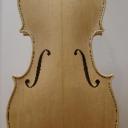Yahoo Answers is shutting down on May 4th, 2021 (Eastern Time) and beginning April 20th, 2021 (Eastern Time) the Yahoo Answers website will be in read-only mode. There will be no changes to other Yahoo properties or services, or your Yahoo account. You can find more information about the Yahoo Answers shutdown and how to download your data on this help page.
Trending News
What's with the violin and the weather?
I've been taking violin lessons for a year now, but I never really got the concept of what the weather does to violins? What happens when it's hot and humid? What happens when it is cold? My teacher said something about warm, humid opening up the wood and the pegs fitting in more smoothly. I dunno. Little help please?
1 Answer
- DLashofLv 79 years agoFavorite Answer
Humid weather swells the wood causing parts to not fit, the peg box wood absorbs the moisture and can change shape. The violin top absorbs this moisture and makes the top swell up pushing the bridge higher making it harder to play. This higher arching of the top makes the sound post looser effecting the sound of the instrument, causing a more sluggish sound. Likewise during the dry winter months everything reverses, the top is lower and the post is tighter. Because of the dryness the sound is harsher, this dryness also makes the wood more susceptible to cracking. The dryness causes the pegs to stick more readily. Unless the violin is in extreme moisture areas, you usually won't get edges or other glued seams opening from the high humidity. However if it gets especially hot like leaving it in a car, the seams can all fall apart and the varnish can melt. On the other hand, the dry winter months are very hard on any glue seams.
Cheap instrument pegs are effected more by these extremes because the wood is of lesser quality and softer allowing for the wood to both absorb and dry out more quickly. The one thing that cheaper instruments are more stable in is the height of the top as generally the instruments are made with thicker materials and harder varnish making them less effected.
Source(s): I am a retried violin maker and repairmen with 35 years experience in the retail violin market and violinist of over 40 years. I am no longer in business and just give advice; For lots of useful info check out my information only web site at, http://www.violininformation.webs.com/ for lots of information, unbiased towards selling anything, on buying an instrument, maintenance, strings and accessories, appraisals and lots more.


